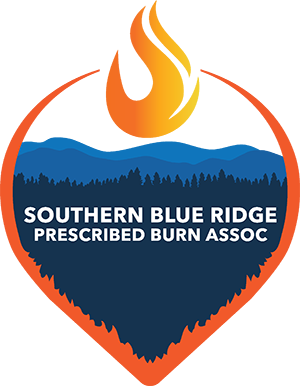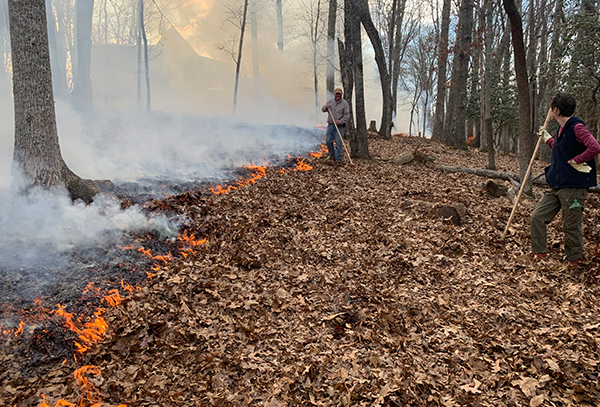Historically, Southern Blue Ridge forests were repeatedly burned by Native Americans and early settlers to maintain a mosaic of diverse forests beneficial for many types of plants and animals. Forest types such as oak-hickory, shortleaf pine-oak, and pine-oak heath depend on fire to perpetuate growth and maintain resiliency. Unfortunately, wildfire suppression and the lack of prescribed fire has altered the Southern Blue Ridge landscape. Our forests and the wildlife that reside here are declining in richness and abundance due to the loss of fire. The most effective and economical tool to restore fire-dependent forests is prescribed fire.
Managing a forest with prescribed fire…
- Reduces the amount of woody debris and leaf litter on the forest floor, in turn reducing the potential for catastrophic wildfires.
- Creates habitat conditions that attract certain wildlife species that desire features such as open tree canopies, an abundance of native plants for forage, and open ground to move freely.
- Encourages regeneration of oak and hickory and other fire-dependent tree and plant species by decreasing competition from species not well-adapted to fire such as red maple.
- Controls tick populations.
- Releases nutrients and increases soil fertility.
Barriers to Using Prescribed Fire on Private Lands
Although prescribed fire is the most effective and efficient land management tool to restoring fire-adapted ecosystems, many landowners do not use fire because of concerns such as:
- Potential liability
- Lack of training, experience, guidance, and funding
- Lack of a burn crew
- Limited equipment or tools
- Smoke management issues
How the SBR-PBA Can Help Private Landowners
- Perform site visits and evaluate parcels
- Assist landowners with burn plans and potential funding
- Create or recommend safe fire breaks and fire lines
- Provide information, training, equipment, and tools
- Ensure appropriate preparations for burns are in place
- Connect with a network of peers to assist with burns
- Supervise their “Certification Burn”
- Provide region-wide updates and opportunities to attend workshops and burns
- Expand community support for the use Rx fire

